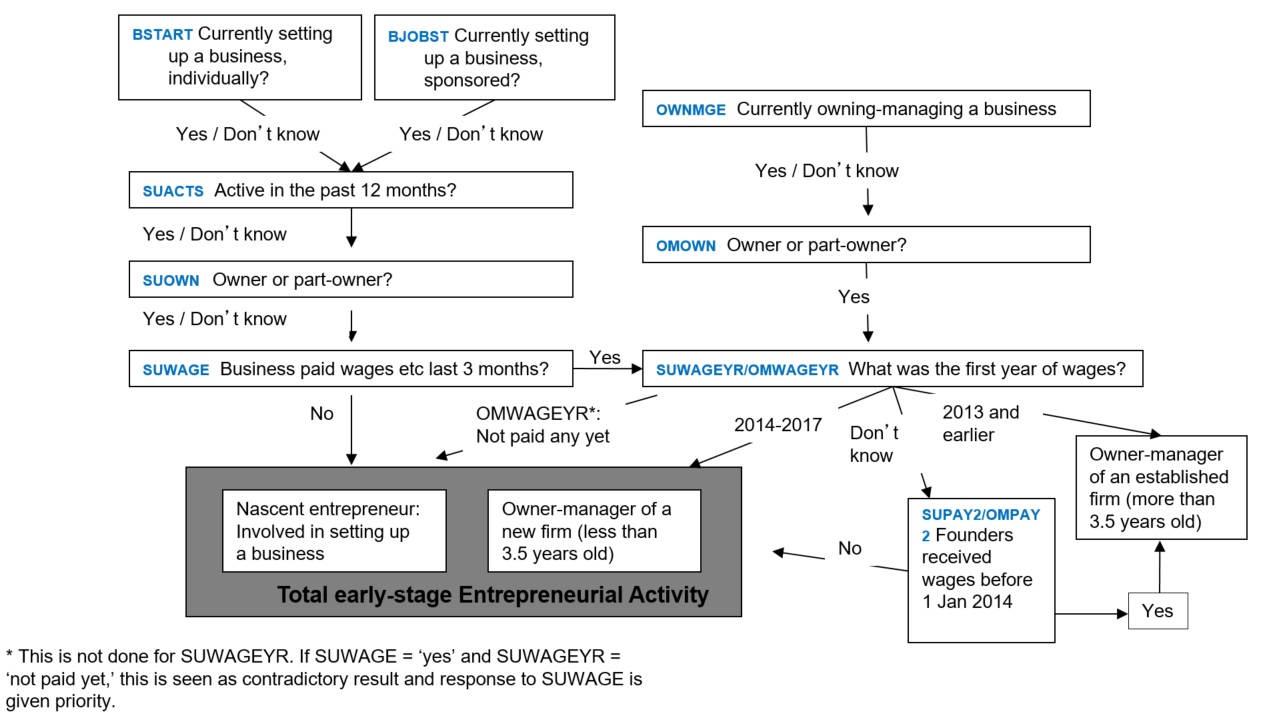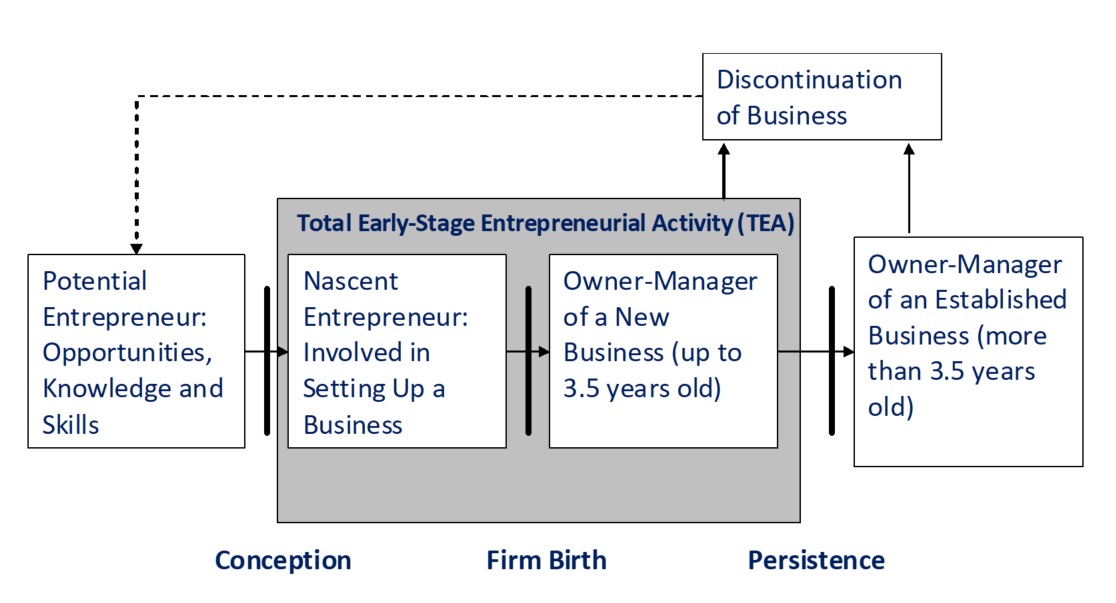To identify and characterize entrepreneurs from the phase of opportunity recognition to the phase of owning and managing an established business is one of the distinguishing features of GEM.
While entrepreneurship is a multifaceted phenomenon with many different meanings and definitions, GEM defines entrepreneurship as:
"Any attempt at new business or new venture creation, such as self-employment, a new business organization, or the expansion of an existing business, by an individual, a team of individuals, or an established business"
Thus, while GEM may see entrepreneurship rather narrowly as new business activity, it takes a broad view of what it recognizes (new) business activity to be. For example, unlike many official records of new business activity, GEM’s definition is not restricted to newly registered businesses.
GEM thus adopts the occupational perspective of entrepreneurship, even though it looks further than individuals officially registered as self-employed. Entrepreneurship can also be seen from the behavioral perspective, for example by identifying employees within organizations who behave entrepreneurially (also known as intrapreneurship or corporate entrepreneurship).
For years GEM has focused on the phase that combines the stage before the start of a new firm (nascent entrepreneurship) and the stage directly after the start of a new firm (owning-managing a new firm). Taken together this phase is defined as “early-stage entrepreneurial activity” (TEA).
In addition, individuals with entrepreneurial attitudes - potentially leading to entrepreneurial activity – and individuals involved as owner-managers in established firms are identified. These categories, which discern the different phases of entrepreneurship, are derived from the GEM questionnaire. The figure below shows how individuals that take part in the Adult Population Survey are labeled as nascent entrepreneurs, owner-managers of new firms and owner-managers of established firms, dependent on the answers of particular GEM questions that are of a recurring nature.

The figure below shows some details of the processes individuals may go through, as conceptualized by the GEM research framework. In addition to the abovementioned phases, entrepreneurial attitudes as potential prerequisites of entrepreneurial activity are identified.
Discontinuation of activities in owning and managing a business are also important aspects of entrepreneurship. Some recurring GEM questions do not only capture the extent to which people discontinue their business, but also the reasons underlying this decision. In many cases, such reasons appear to be rather positive. Indeed, many of the individuals that discontinue their business are involved in new start-ups (Bosma and Levie 2009; Hessels et al. 2011).

The study of discontinuation led GEM to incorporate questions in the Adult Population Survey to provide additional information on what proportion of discontinued activities have been continued in other hands, what proportion continue by changing their principal activity and what proportion have completely exited the market.
GEM’s focus on individuals as units of observation enables collection of information on the entrepreneurial motivations, aspirations and other characteristics of individuals. Using this information enables researchers to employ units of analysis - and likewise adopting definitions of entrepreneurship - most appropriate to their research objectives. For example, the GEM database allows the exploration of individual or business characteristics, as well as the causes and consequences of new venture creation.
This is also what makes the country comparisons particularly interesting; it is not only about ‘how many’ people are involved in entrepreneurship; it is also about exploring differences in types and phases of entrepreneurship process. As a result, a wide range of entrepreneurial initiatives have been uncovered. This has led to, for example, the various GEM studies on high-impact entrepreneurship and gender.
